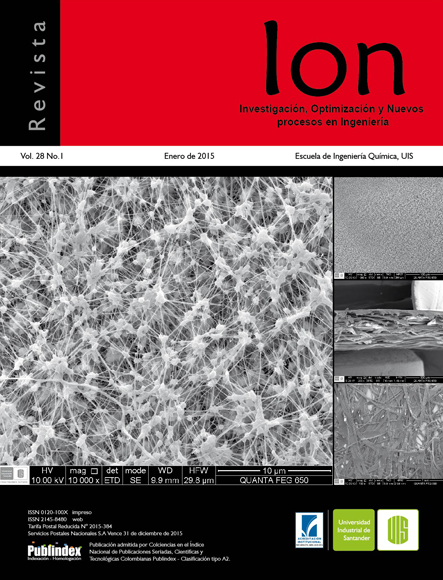Evaluation of hydrochloric acid formation from hydrolysis of inorganic salts in crudes with naphthenic acids content
Published 2015-07-17
Keywords
- Inorganic Salts,
- Salt Hydrolysis,
- Crude Oil,
- Naphthenic Acids,
- Corrosion in Overhead System.
How to Cite
Abstract
Formation of Hydrochloric Acid in overhead system of atmospheric distillation unit resulting from the hydrolysis of inorganic salts such as Magnesium Chloride (MgCl2) and Calcium Chloride (CaCl2) mainly has been a major problem of corrosion in this section for petroleum industry. This paper shows the formation of Hydrochloric Acid in Colombian crudes with different content of inorganic salts and the salt concentration was between 1.87 to 2.62kg of salt/159m3 of crude oil (4.12 to 5.78 pounds of salt /1000 barrels of crude oil) temperatures used were between 150 - 350°C. Concentration of naphthenic acids present in each oil was taken into account as a way to assess their possible influence on the formation of hydrochloric acid. Crudes were processed in a visbreaker pilot plant at atmospheric pressure.
The rates of formation of HCl, obtained from the mass balance showed evolution ranges in the order of 96.2 - 100% for Magnesium Chloride and 3.1% Calcium Chloride. It was observed that in the crude used hydrochloric acid evolution was mainly due to the normal process of hydrolysis of salts.
Downloads
References
[2] Gray MR, Eaton PE, Le T. Inhibition and Promotion of Hydrolysis of Chloride Salts in Model Crude Oil and Heavy Oil. Pet. Sci. Technol. 2008;26:1934-44.
[3] Londono Y, Mikula R, Eaton PE, Gray MR. Interaction of Chloride Salts and Kaolin Clay in the Hydrolysis of Emulsified Chloride Salts at 200–350°C. Pet. Sci. Technol. 2009;27:1163-74.
[4] Ojeda E, Hing R. Estudio de la corrosión en el circuito del tope de la torre de destilación atmosférica de la Refinería “Hermanos Díaz” de Santiago de Cuba (Parte III). Tecnología química. 2004;24(3):20-7.
[5] Nace Internacional. Application of ionic equilibria process simulation for atmospheric distillation overhead systems. Houston, Estados Unidos: Duggan GG, Rechtien RG; 1998.
[6] Nace Internacional. Effect of Organic Chloride Contamination of Crude Oil on Refinery Corrosion. Houston, Estados Unidos: Gutzeit J; 2000.
[7] Giesbrecht W, Duggan GG, Jackson D. Effective Corrosion Control Techniques for Crude Unit Overheads. Int. Nace Corrosion. 2002;477- 94.
[8] Valenzuela D, Dewan A. Refinery Crude Column Overhead Corrosion Control, Amine Neutralizer Electrolyte Thermodynamics, Thermochemical Properties, and Phase Equilibria. Fluid Phase Equilib. 1999;158(1):829-34.
[9] Heler JJ. Corrosion of refinery equipment by naphthenic acid. Mater. Prot. 1963;2(9):90-6.
[10] Nace Internacional. Crude Unit Overhead Corrosion Control. Nace Int. Corrosion. Houston, Estados Unidos: Branden VK and Petersen PR; 1998.
[11] Eaton P, Kaur H, and Gray MR. Factors Affecting Salt Hydrolysis in Heavy Crudes. Eurocorr. 2010;5:3420.
[12] Gray MR, Eaton P, Le T. Kinetics of Hydrolysis of Chloride Salts in Model Crude Oil. Pet. Sci. Technol. 2008;6:1924–33.

